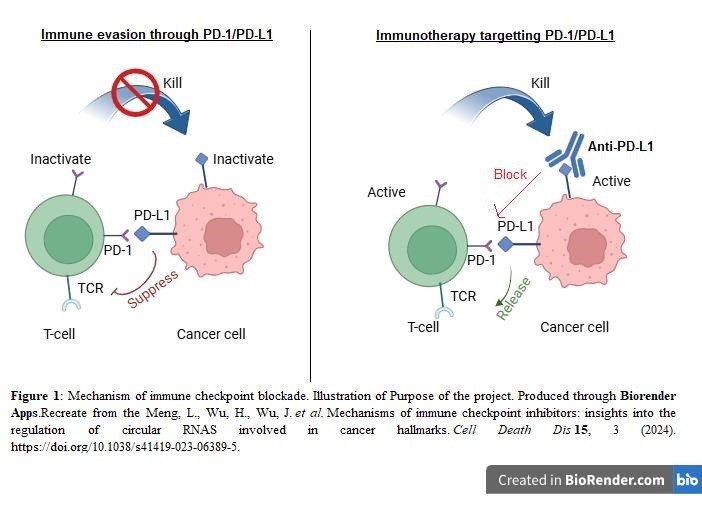Unmasking Cancer: How Anti-PD-L1 Awakens the Immune Attack
Following the revolutionary advances in immune checkpoint inhibitors (ICIs), recent research has focused on improving antibody production to make these life-saving therapies more affordable and accessible to society. Understanding how ICIs work in cancer patients is therefore crucial.
Antibodies can attack cancer cells through several mechanisms, depending on their targets, design, and function. This post specifically highlights the mechanism of immune checkpoint blockade (Figure 1)1. ICIs were first approved by the U.S. FDA in 2011 for metastatic melanoma2. Over the past decade, multiple ICIs have been developed, with the PD-1/PD-L1 pathway being the most well-established and widely used in clinical cancer immunotherapy.
Under normal conditions, PD-1 binds to its ligand PD-L1 as a “peace bridge” between T cells and normal cells, preventing excessive immune reactions and autoimmunity. However, cancer cells exploit this pathway by overexpressing PD-L1 to evade immune attack, effectively “hijacking” the peace bridge. Monoclonal antibodies targeting PD-1 or PD-L1 disrupt this hijacked interaction, restoring the immune system’s ability to recognize and destroy cancer cells.
Anti-PD-L1 antibodies are rewriting the rules of cancer therapy by turning the immune system into a precise cancer-fighting ally. With new technologies making antibody production faster and more affordable, we’re one step closer to bringing these life-changing treatments to everyone who needs them.

References:
- Meng, L., Wu, H., Wu, J. et al.Mechanisms of immune checkpoint inhibitors: insights into the regulation of circular RNAS involved in cancer hallmarks. Cell Death Dis15, 3 (2024). https://doi.org/10.1038/s41419-023-06389-5
- Alexander W. (2016). The Checkpoint Immunotherapy Revolution: What Started as a Trickle Has Become a Flood, Despite Some Daunting Adverse Effects; New Drugs, Indications, and Combinations Continue to Emerge. P & T : a peer-reviewed journal for formulary management, 41(3), 185–191.
Author: Noorhamizah Binti Suhaimi
NanoBio4Can MSCA Co-Fund Fellow
Izmir Biomedicine and Genome Center (IBG)